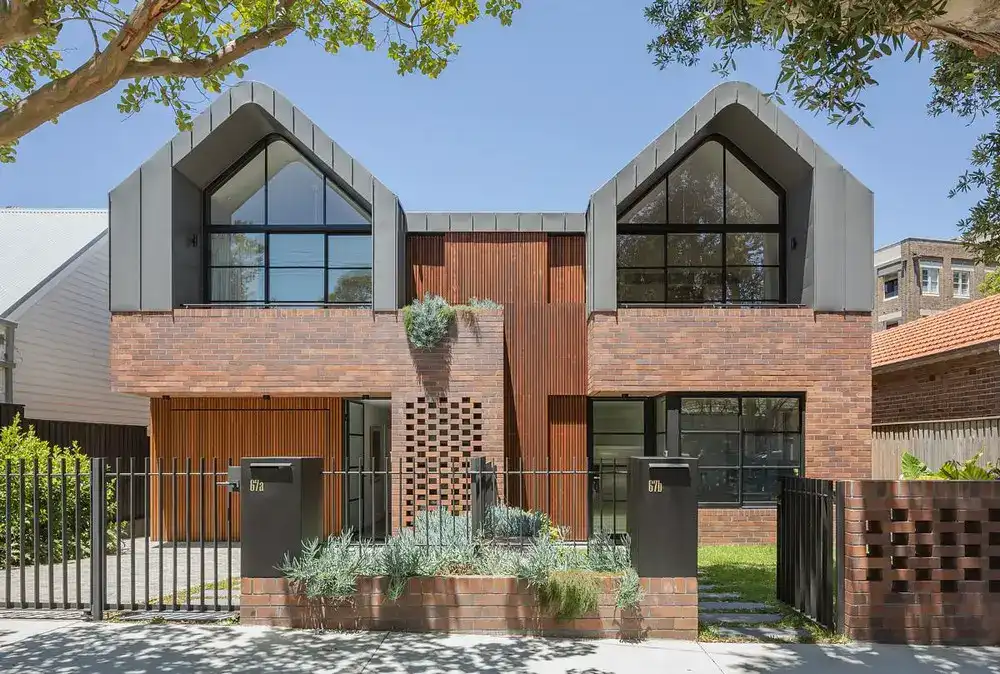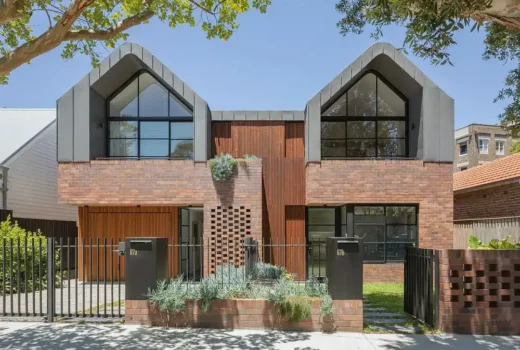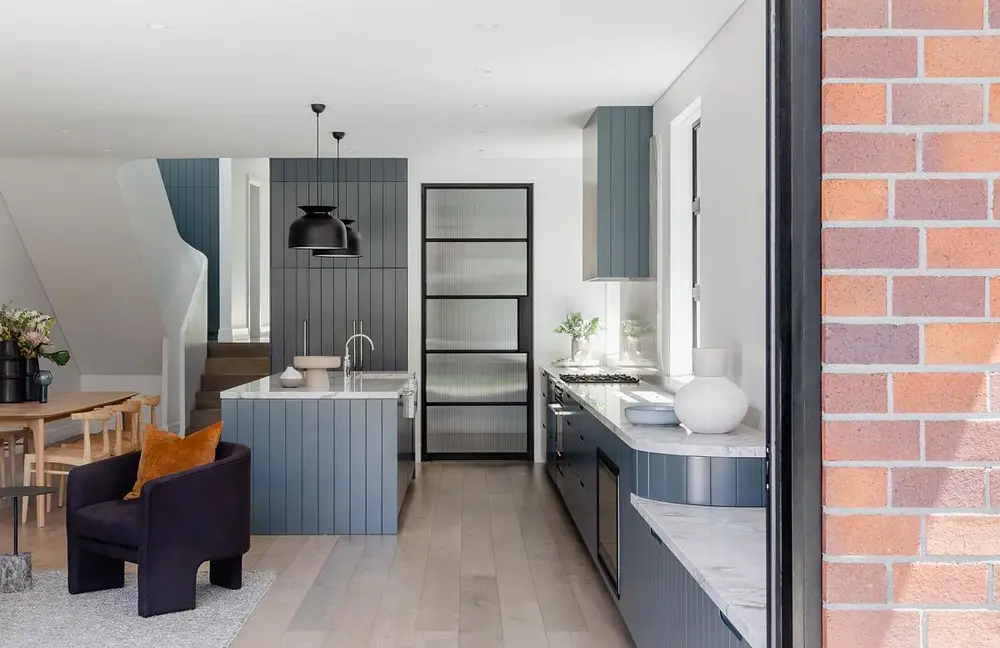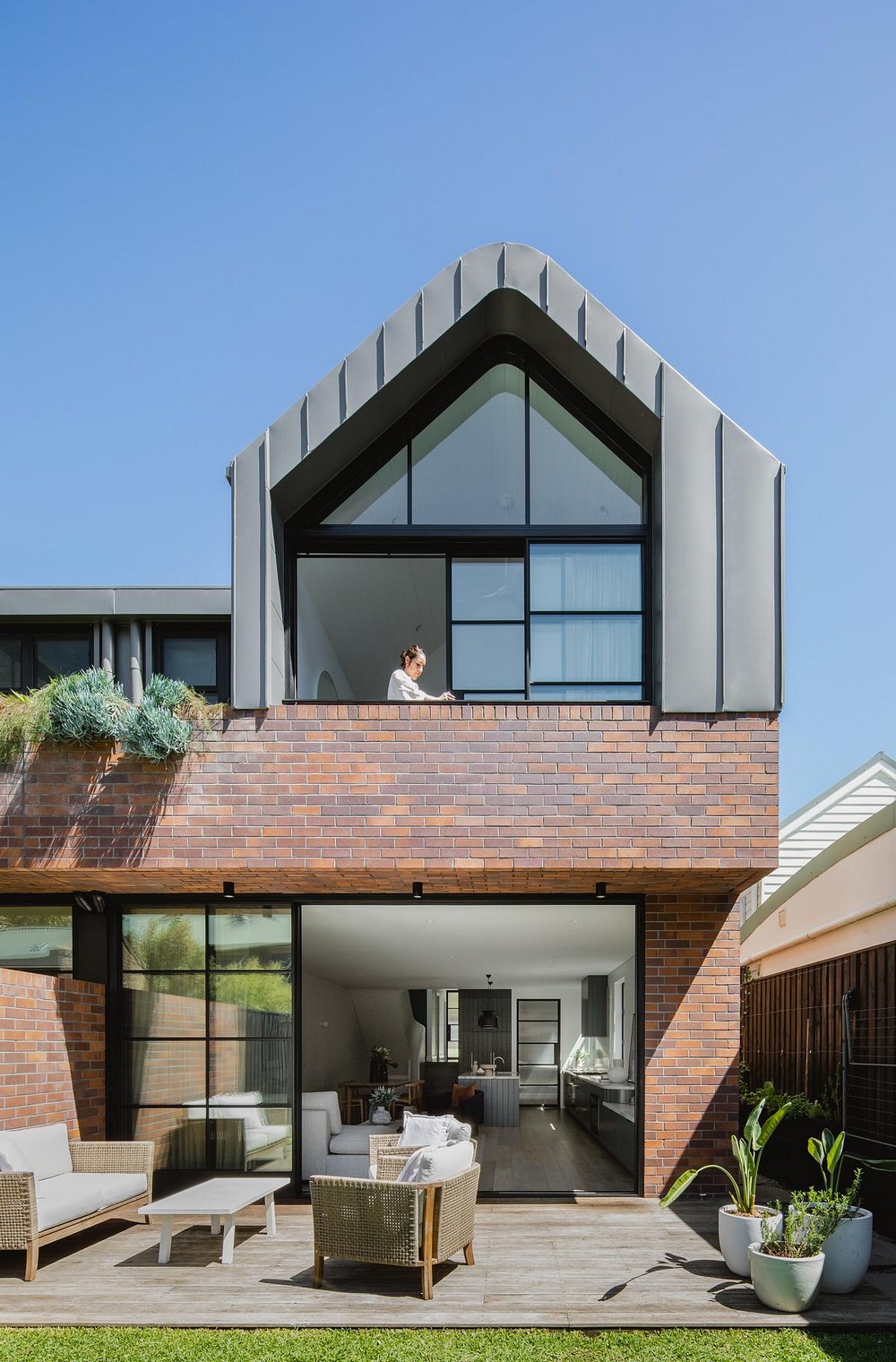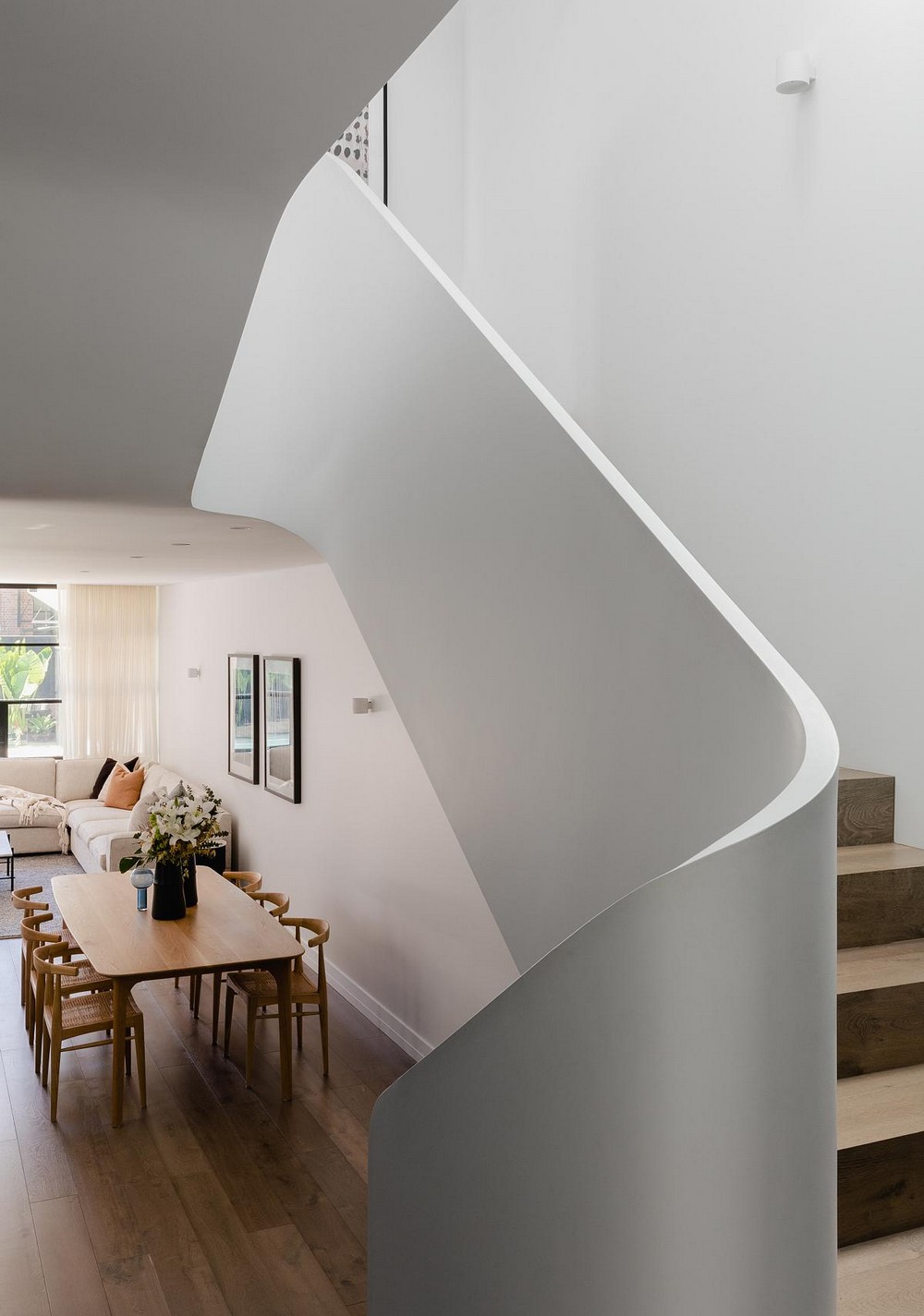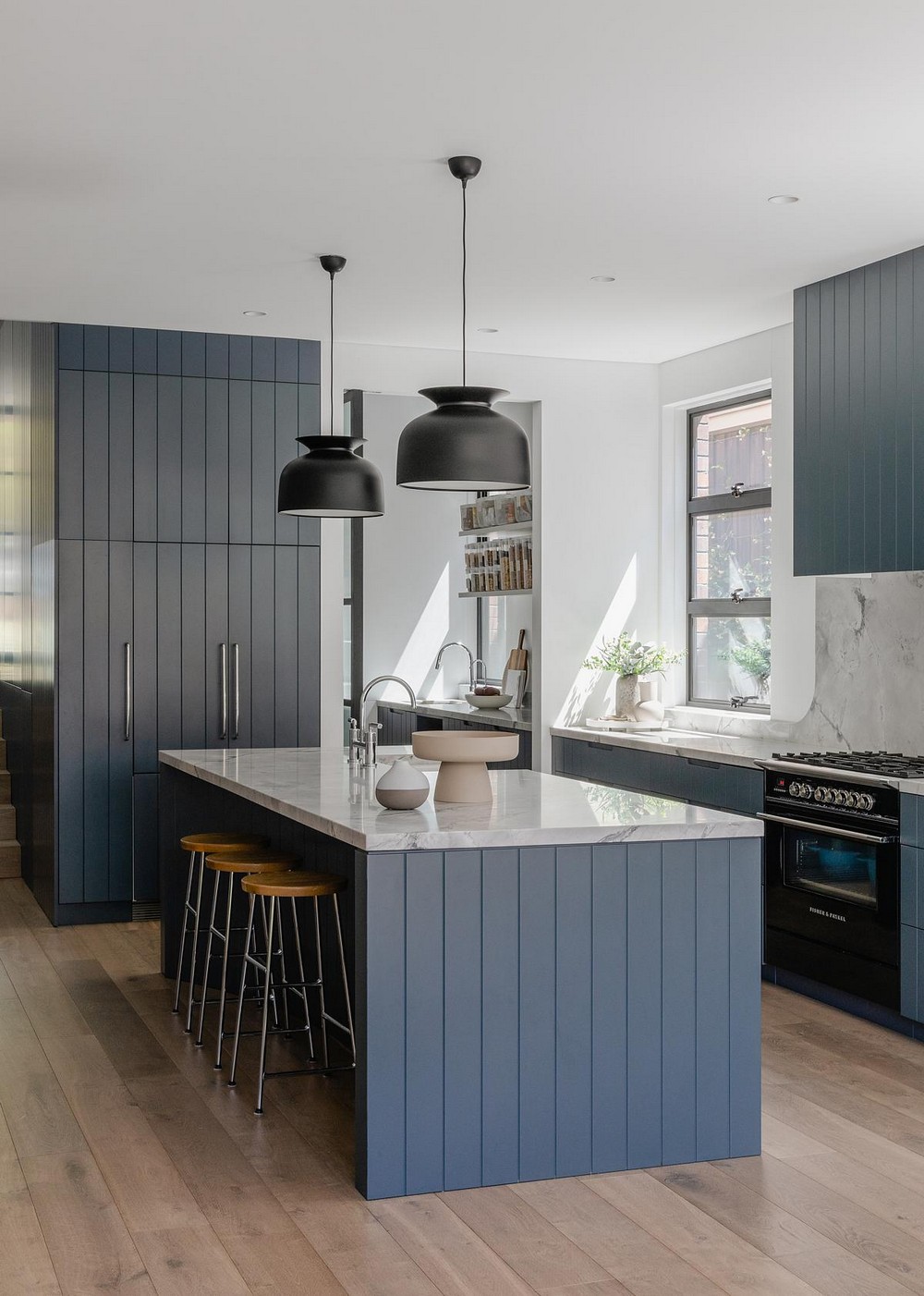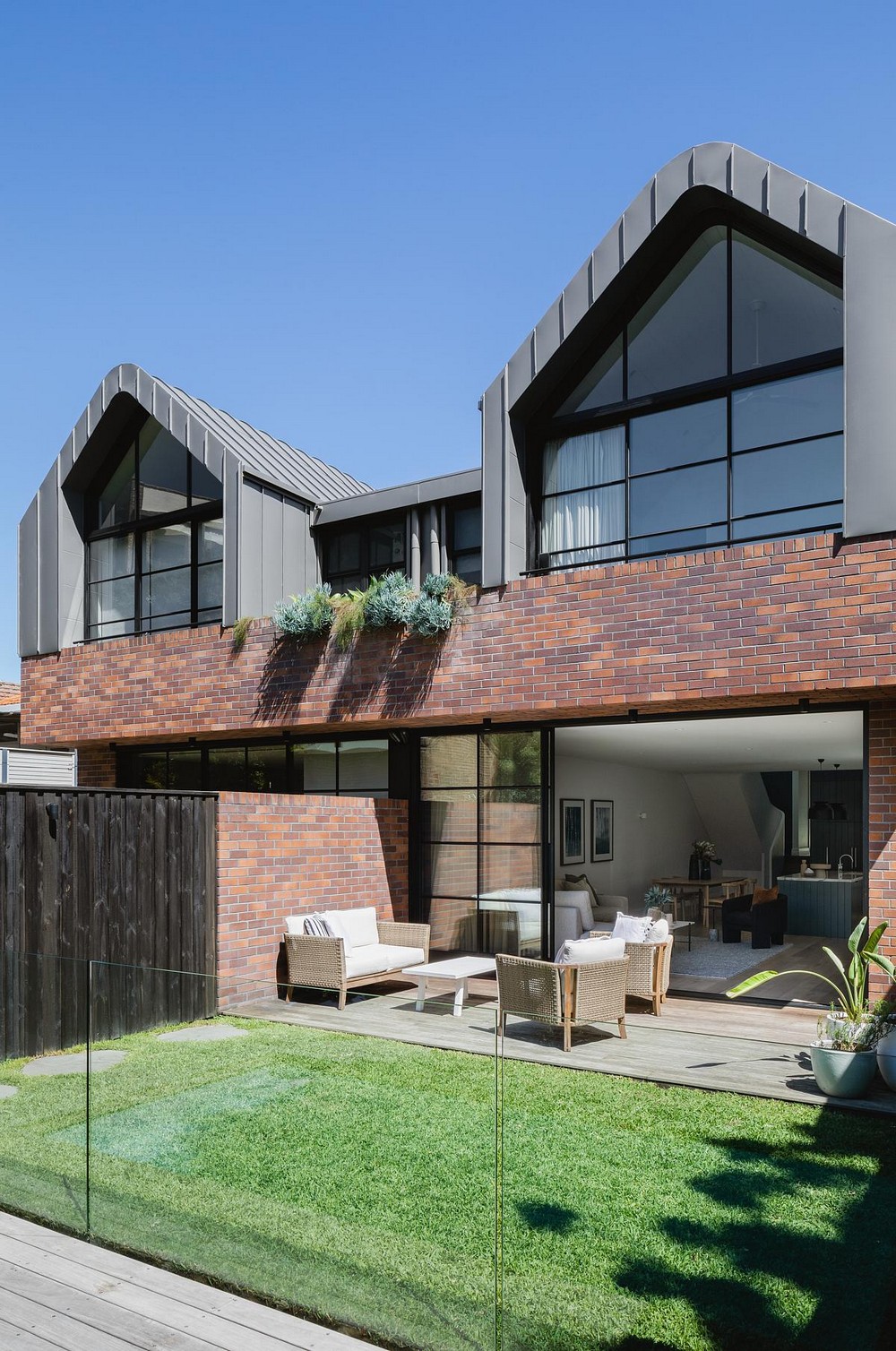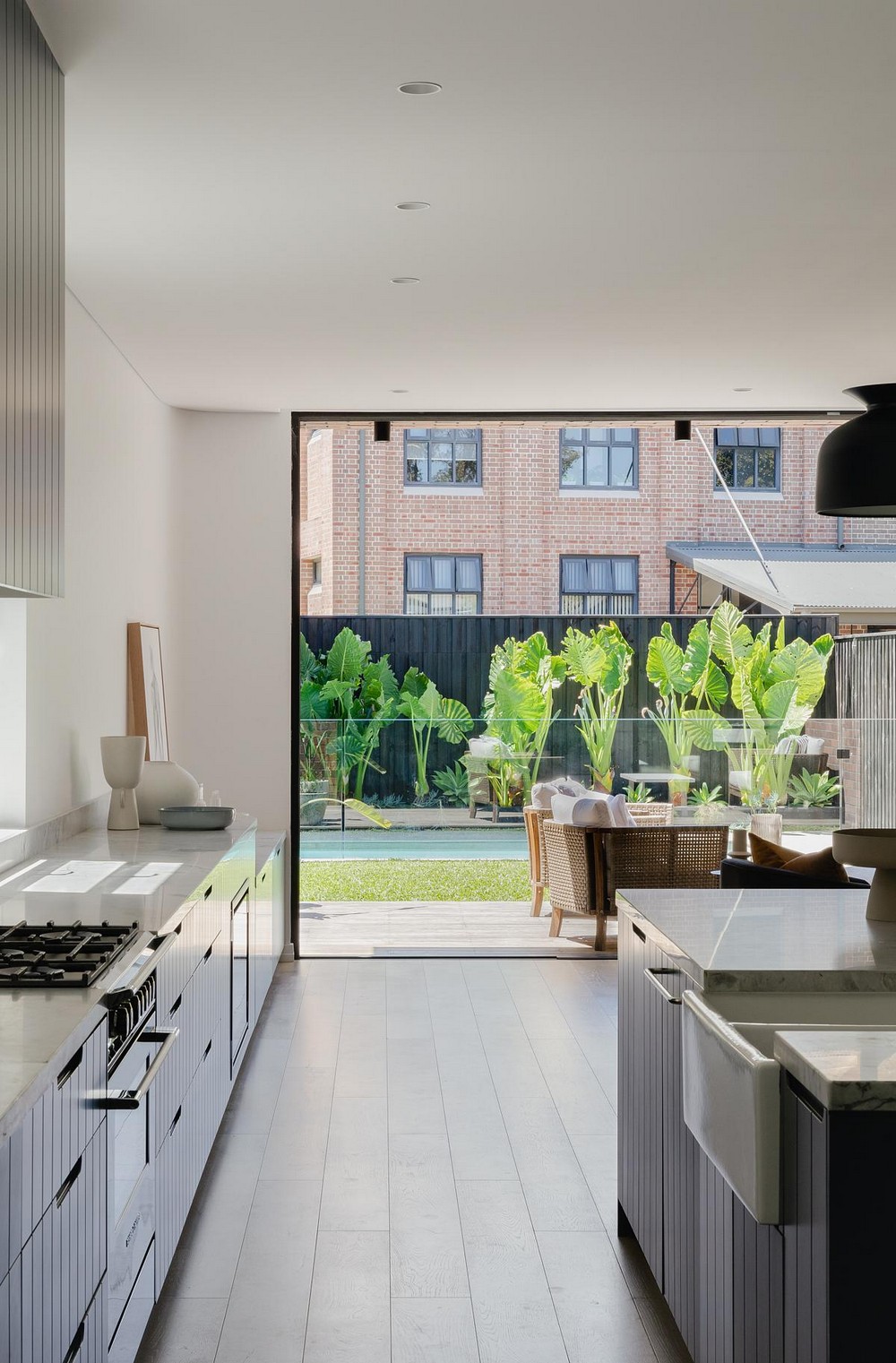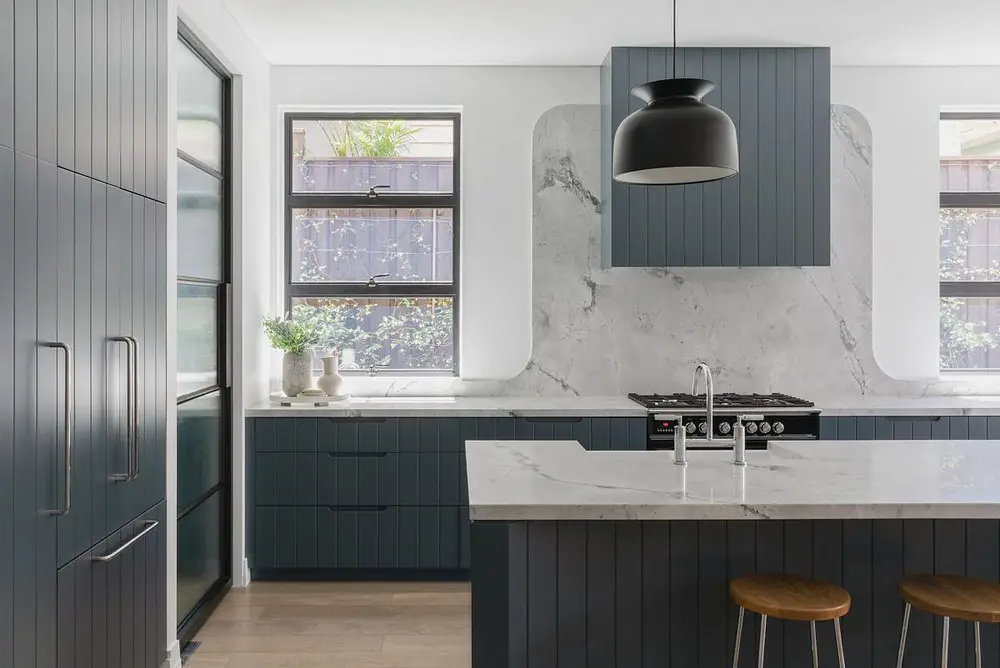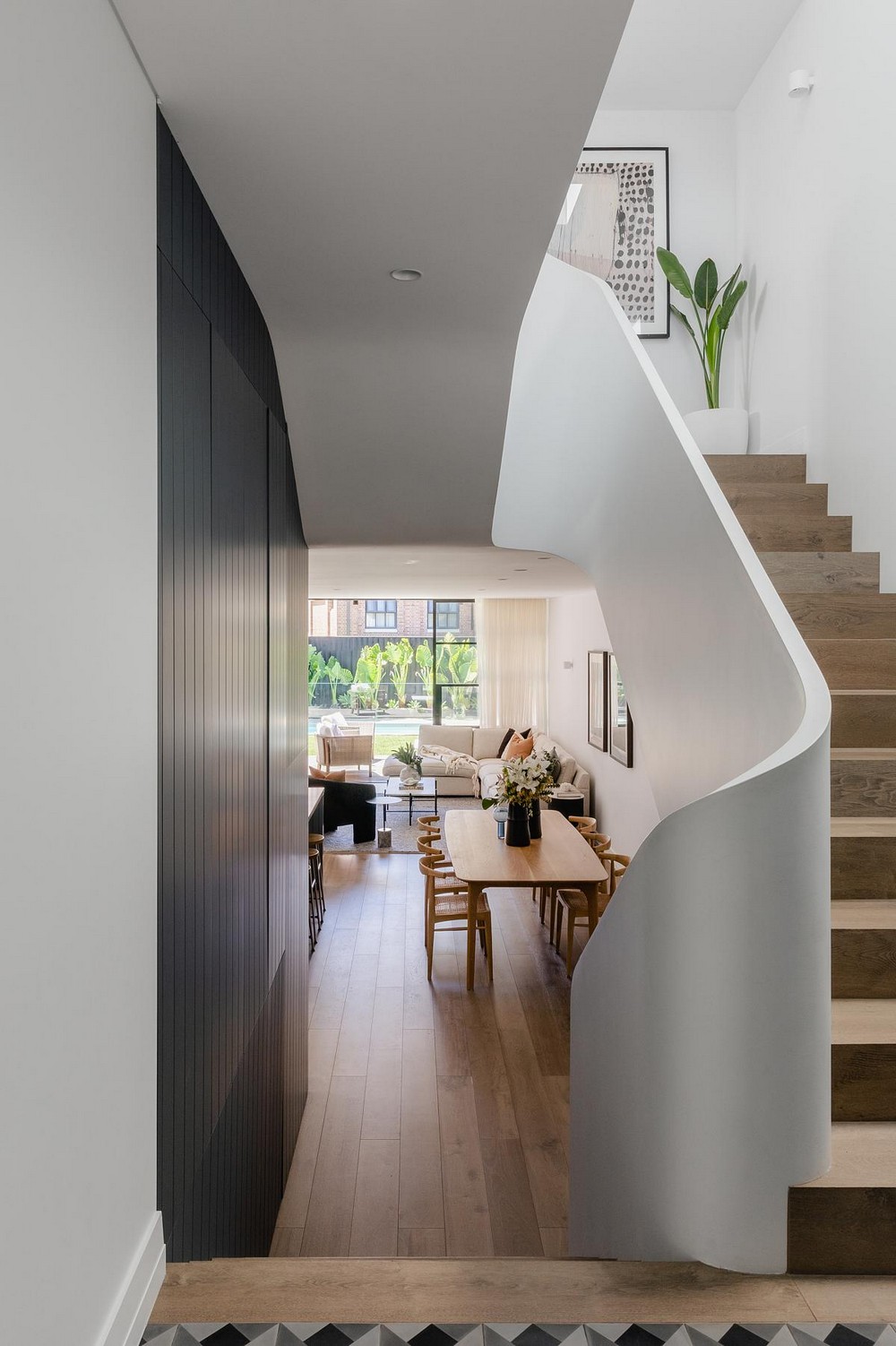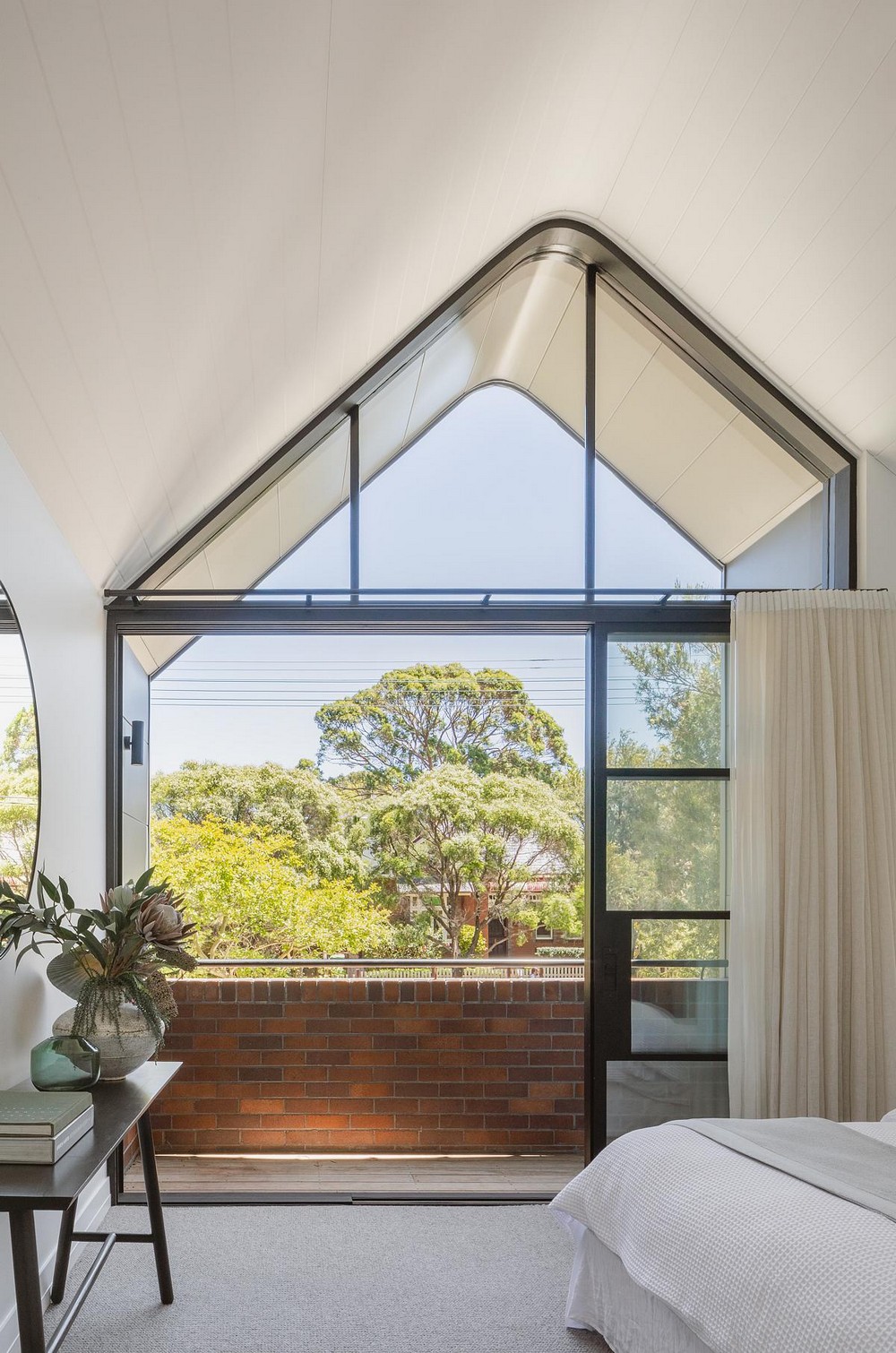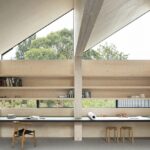Dulwich Hill Duo House NSW, Modern New South Wales home, Australian real estate architecture photos
Dulwich Hill Duo in New South Wales
18 Sep 2023
Design and Project Architect: Blake Letnic Architects
Location: Dulwich Hill, New South Wales, Australia
Photos by Katherine Lu
Dulwich Hill Duo, Australia
Dulwich Hill Duo is a new semi-detached dual occupancy located in Sydney’s Inner-West that maximises efficiency of space and elevates everyday living within a small footprint. With housing affordability becoming an increasingly prevalent issue, the project offered an opportunity to not only provide a cost-effective outcome for our clients but contribute to improving housing density and diversity within the suburban fringes.
The clients, two brothers were seeking to live side by side with their individual families in an attached dual occupancy. They approached our practice after they had demolished the existing dilapidated weatherboard cottage. The brothers and their partners were at different stages of their life and financial capacity, and as a result were seeking differing programs for the resultant spaces.
The owners of Lot A supplied a brief for a typical 4-bedroom family home with consolidated living areas, swimming pool and on-site parking, while the owners of Lot B provided an unusual brief requesting the design to cater to a share-house arrangement. This involved providing additional bedrooms with dedicated bathrooms, shared living / kitchen / dining areas on the Ground Floor, as well as a separate living space on the First Floor for their private use within the house. While the two brothers and partners had differing architectural tastes, they were looking for a consistent contemporary external treatment that retained a cohesive external form.
The result is a split-level, semi-attached dual occupancy that explores a contemporary reinterpretation of the vernacular of the area, maintaining appropriate density and engaging with the streetscape. Face brickwork references the prevailing construction material of the surrounding suburbs, as well as the adjacent heritage listed Waratah Flour Mills that feature along the streetscape. Brick and timber screens also look to develop a dynamic interaction between the internal spaces and the public domain, softening building masses.
The two dwellings present asymmetrically along the street frontage, rejecting the typical, knee- jerk reaction to the external composition of duplexes with a mirrored street elevation. The individual identities of each dwelling carry through to internal spaces with interior finishes and forms reflecting alternate briefs. Lot A features natural stone, hand-made tiles and sinuous plasterboard balustrading, while Lot B reflects a more robust palette with natural timber finishes, terrazzo tiling and steel balustrading. Both dwellings capitalise on the height of the gable roof forms with a greatly increased sense of light and space in the first-floor areas.
Working in close collaboration with the owner builder client, significant cost savings were found in the manufacturing of bespoke steel framed windows and joinery offshore. Sustainable considerations included passive design techniques such as double-glazing throughout, deep eaves to the larger glazed openings, significant insulation, operable timber shading and generous cross-ventilation despite the built to boundary forms. In tandem, the landscape design sought to reinstate native species where possible, and to softening building masses at ground and upper levels with the inclusion of elevated planters.
Who are the clients and what’s interesting about them?
The clients, two brothers were seeking to live side by side with their individual families in an attached dual occupancy. The brothers and their partners were at different stages of their life and financial capacity, and as a result were seeking differing programs for the resultant spaces.
What was the brief?
The clients at Lot A were seeking a typical family house with 4 bedrooms, living spaces, parking and swimming pool. The Lot B clients were at a different point in their lives and financial capacity and were looking to prepare a design to cater to share house living. They intended to provide common living spaces on the ground floor but were looking to provide their own living space on the 1st floor. As a result they were looking to maximise the potential for additional bedrooms and functional outdoor areas to be enjoyed.
What were the key challenges?
The key challenges was arriving at a bespoke architectural solution in a reasonable budget, aligning four individual clients in one built form, and designing a contemporary dwelling in a heritage context at the clients’ request.
What dictated the planning of the spaces?
The desire for share house living dictate the planning of Lot B, whereas Lot A was a more typical family house.
Lot B includes living spaces at either end of the lot, utilising spaces at different items of the day. The primary living spaces open towards the rear yard for privacy and for interaction with the pool and garden spaces.
The split level planning was driven by the slope of the site, desire for greater ceiling heights, and maximising the planning efficiency of the site and lot.
What are the design elements that define these interiors?
The individual identities of each dwelling carry through to internal spaces with interior finishes and forms reflecting alternate briefs. Lot A features natural stone, hand-made tiles and sinuous plasterboard balustrading, while Lot B reflects a more robust palette with natural timber finishes, terrazzo tiling and steel balustrading.
Both dwellings capitalised on the height of the gable roof forms with a greatly increased sense of light and space in the first floor areas.
Key materials used:
The external material palette draws inspiration from the materiality of the surrounding context: the face brick of the adjacent heritage listed Waratah Flour Mills, neighbouring weatherboard or timber cottages, metal roofing and cladding of industrial structures historic to the area.
Internally, Lot A features natural stone, hand-made tiles and & sinuous plasterboard balustrading, while Lot B reflects a more robust palette with natural timber finishes, terrazzo tiling and steel balustrading.
Dulwich Hill Duo House in New South Wales – Building Information
Design and Project Architect: Blake Letnic Architects – https://www.blakeletnic.com/
Project size: 403 sqm
Site size: 537 sqm
Completion date: 2022
Building levels: 2
Construction Builder: TPS & Co
Photography: Katherine Lu
Dulwich Hill Duo, New South Wales House images / information received 180923
Location: Dulwich Hill, NSW, Australia
Sydney Houses
New Sydney Property Designs – recent NSW real estate selection from e-architect:
Architects: CplusCole Architectural Workshop
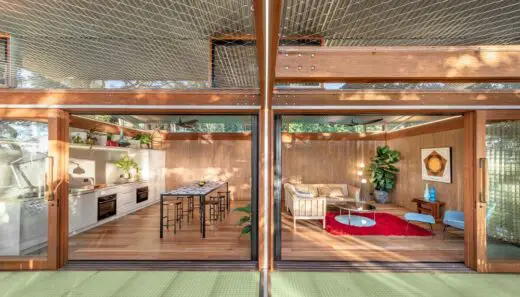
photo © Michael Lassman Photography
Balmy Palmy House, Palm Beach NSW
Architects: Richard Cole Architecture
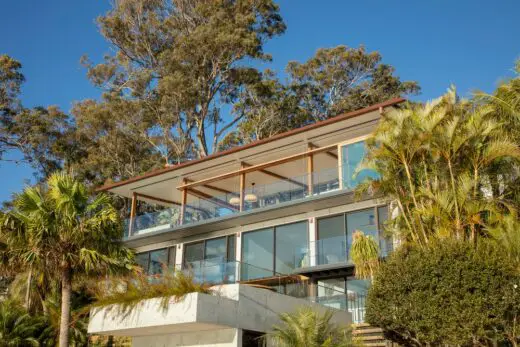
photo : Simon Wood Photography
Foreshore House, Pittwater NSW
Design: CplusC
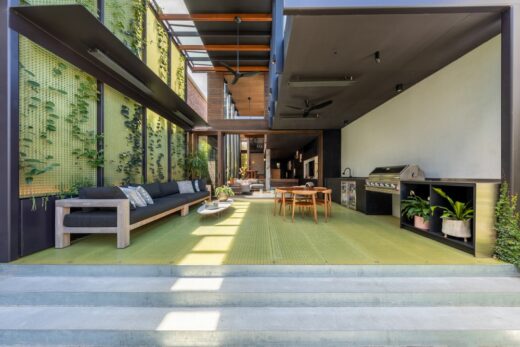
photos : Murray Fredericks and Michael Lassmane
ZZ Top House, McMahons Point
Design: OOF! architecture
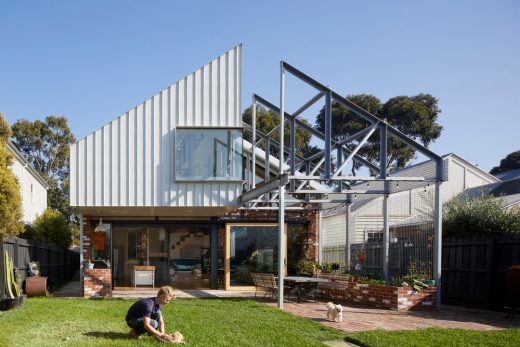
photo : Tatjana Plitt
Gantry House, Newport
Architecture and Interiors: Terroir
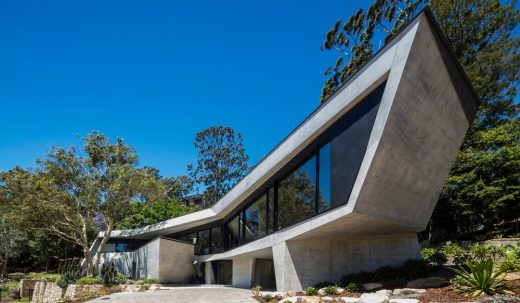
photograph : Brett Boardman
Castle Cove House
Architecture in Australia
Architecture in Australia
New South Wales Properties
Architect: Rolf Ockert
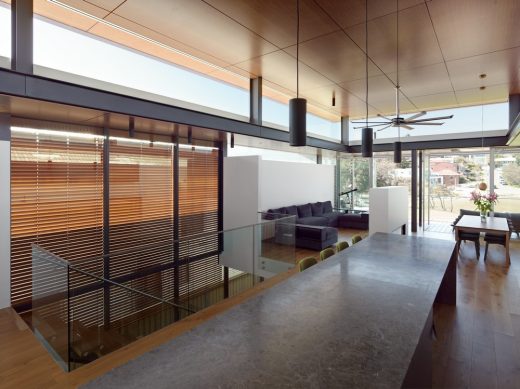
photo © Luke Butterly
North Curl Curl House
Australian Architect Offices : Studio Listings
Comments for the Dulwich Hill Duo, New South Wales House property design by Blake Letnic Architects page welcome.

